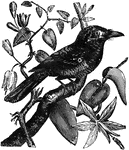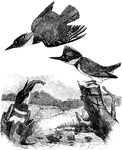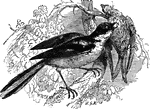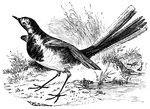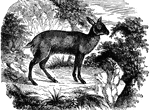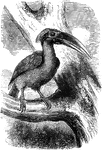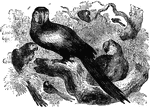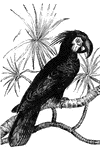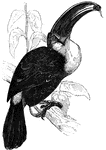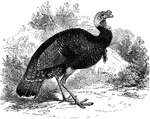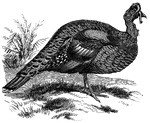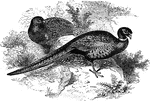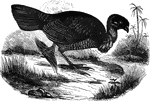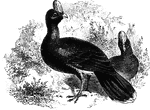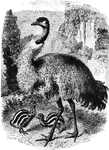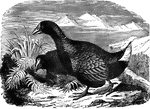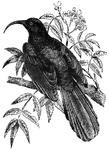
Namaqua Bee-Eater
The namaqua bee-eater, native to Western Africa. Its diet consists of insects, particularly bees and…
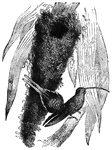
Supercolious Hummingbird
The supercolious hummingbird, noted for it's unusually large nest. It is native to Brazil.
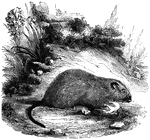
Cumming's Phleomys
"Found on the Island of Lucon. It is a rare species, even in its native island, and its habits are little…
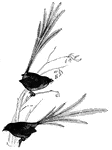
Emu Wren
Native to Australia, this is known to natives of New South Wales as waw-gul-jelly. It is shy…

Falconelle
Native to Australia, the falconelle is approximately the size of a sparrow, and resembles the great…

Argali
"It is remarkable, even among this active genus, for the agility with which it speeds along the rocks…
!["Morning mustering of the 'Contrabands' at Fortress Monroe, on their way to their day's work. As a living illustration of one of the aspects of the Civil War, a sketch is given above of the contrabands, [African Americans], going to their daily work at Fortress Monroe. The variety of the Ethiopian countenance is capitally given, and while some remind us of the merry phiz of George Christy in his sable mood, others wear the ponderous gravity of a New Jersey justice. The [African American] men had a comparatively pleasant time under their state of contraband existence."— Frank Leslie, 1896](https://etc.usf.edu/clipart/12400/12451/mustering_12451_mth.gif)
Morning Mustering
"Morning mustering of the 'Contrabands' at Fortress Monroe, on their way to their day's work. As a living…
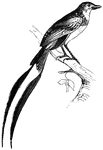
Tricolored Alectrurus
Native to South America, the tricolored alectrurus measures only six inches in length.

Golden Thrush
Also known as White's thrush, the golden thrush is native to Japan and Savabut migrates to Southern…
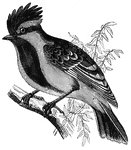
Black-Lored Tit
Native to the Himalaya Mountains, P. xanthogenys is somewhat smaller than the great tit.
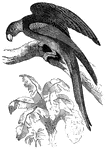
Carolina Parrot
The Carolina parrot is native to Guiana, but can be found as far north as Virginia. They often travel…
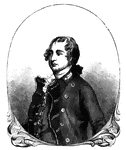
Sir Guy Carleton
Sir Guy Carleton, afterward Lord Dorchester, was Wolfe's quartermaster at the storming of Quebec, and…

Parakeet Macaw
Native to South America, the parakeet macaw is renowned for its powers to imitate human speech.
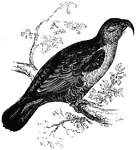
Long-Billed Parrot
The long-billed parrot (nestor productus) is thought to be the connecting link between parrots…
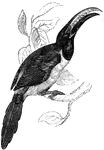
Humboldt's Araçarl
A native of Brazil, Humboldt's araçarl averages approximately seventeen inches in length
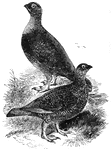
Red Grouse
Native only to the British Isles and the Orkneys, the red grouse is often bred in confinement to be…
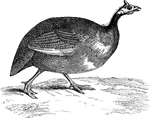
Guinea Fowl
The Guinea-fowl (or pintado) was originally native to Africa, but was introduced to American poultry-yards.
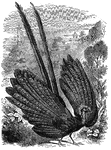
Argus Pheasant
Native to Sumatra and India, the argus pheasant can measure up to five feet in length.
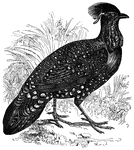
Horned Pheasant
Also known as Hastings' tragopan, the horned pheasant is native to the northern reaches of the Himalayas.
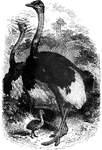
Ostriches
A large, flightless bird, the ostrich measures six to eight feet tall, and is native to the sandy desert…
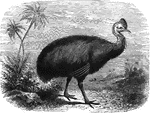
Cassowary
The cassowary is a large, flightless bird native to Australia and New Guinea. Its head and neeck have…

Moa skeleton
The partial skeleton of a moa, an enormous flightless bird once native to New Zeland, now extinct.

Common European Water Rail
The common European water-rail is native to warmer parts of Europe, as well as portions of Asia.
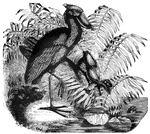
Balœniceps
About three feet, nine inches in height, the balœniceps is native along the banks of the White…
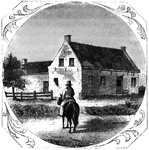
Vankleek House
The Vankleek House. It was built by Myndert Vankleek, one of the first settlers in Dutchess county,…

Campbell's Monument
Campbell's Monument. This rude memorial was erected in 1831, by J. W. Barber, Esq., of New Haven, the…
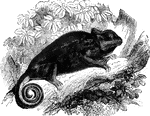
Common chameleon
Measuring between sixteen and eightenn inches long, the common chameleon of Europe is native to India…

Golden Tree Snake
"Four to five feet long; color yellowishgray, cleaning with a pale golden hue, and dotted with whitish…
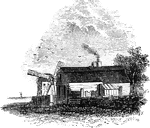
Hubbard's House and Mill
"Hubbard's House and Mill. The inscriptions upon the monument are as follows: East Side: "Oliver Hazard…
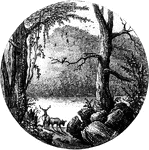
Lake Sinnipink
"Lake Sinnipink, or Bloody Pond. This view is from the outlet of the lake, within a few rods of the…
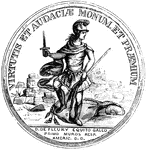
De Fleury Medal Front
"Medal awarded to Lieutenant-colonel De Fleury. This is a representation of the medal, the size of the…
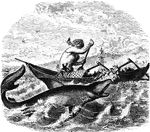
Shark
"Theses are at once distinguished by their elongated, spindle-shaped bodies, their branchial apertures…
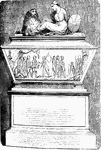
John André's Monument
Major John André's monument in Westminster Abbey. André was executed as a spy by Americans in 1780.…
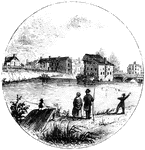
Trenton
"Trenton Bridge and vicinity. This view is from the north side of the Assanpink, a few rods above the…

Washington's head-quarters
"Washington's head-quarters. This view is from the Reading rail-road, looking east, and includes a portion…
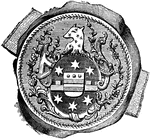
William Tryon Seal
"Seal and signature of Tryon. William Tryon was a native of Ireland, and was educated to the profession…

Marine trumpet-shell
"The marine trumpet or Triton's shell, Triton variegatus, is elegantly variegated with red…


